It’s a quiet afternoon in Mexico City’s picturesque Santa María la Ribera neighborhood when suddenly, the boom of perreo intenso erupts from above a local hardware store. Within the building is a loft-style dance studio where the entirety of Tempvs Music’s talent and management roster is in dress rehearsal ahead of their performance at the latest edition of Coca-Cola Flow Fest, Mexico’s first major reggaeton music festival. Bombshell and resident spitfire Charly Gynn scored the coveted booking back in June 2022, leading the crew—which also includes reggaeton boy band #Mexasinpartys, DJ and audio engineer Danny Damn, and producer turned A&R Jace Kimura—to begin rehearsals immediately. The group is rounded out by a trio of sweaty backup dancers, as well as stylist Youri Noyola, who’s pulled out all the wardrobe stops—mylar pants, spiked accessories, and more cutouts than a wheel of swiss cheese.
For some, five months of rehearsals ahead of an opening festival slot might seem excessive. But at Tempvs Music, preparation is the foundation of success. Prior to Gynn’s stellar appearance at December’s Flow Fest, she began gaining buzz in 2019, opening shows for the likes of Bad Gyal and La Zowi. The pandemic forced Gynn and co. to focus on producing new music, resulting in brazen perreos like “Puritana” and “Culisuelta,” roaring back onto the stage in a 2021 Boiler Room session alongside DJs Cachorra and Dam Dam. Gynn released her cumbiatón-inflected debut EP La Fiesta de la Virgen in March 2022, just before her appearance at Festival Marvin, cementing her as one of Mexico City’s freshest reggaeton talents. Yet Tempvs Music’s ethos of horizontal growth is the backbone of its operation.
“Tempvs Music was born out of necessity,” says Gynn from the label’s Tlahuac studio, in the south of the city. “We’re independent artists, so we needed to produce music in a professional manner and give it an infrastructure so that it could function as a business. Everyone jumps in as producer, vocal coach, designer, management, and on-stage support.”
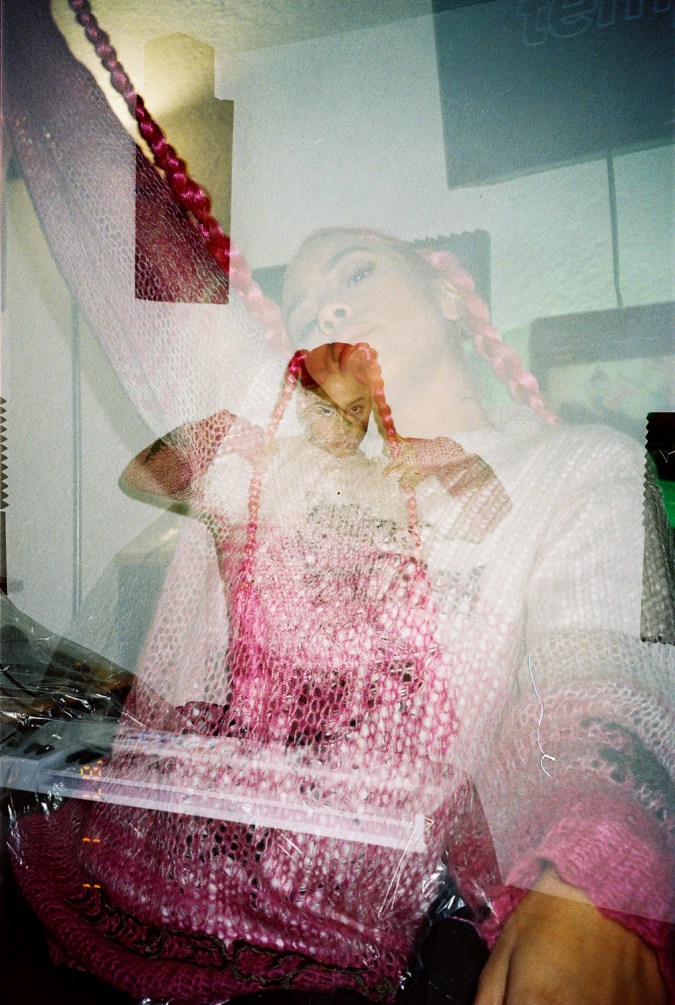
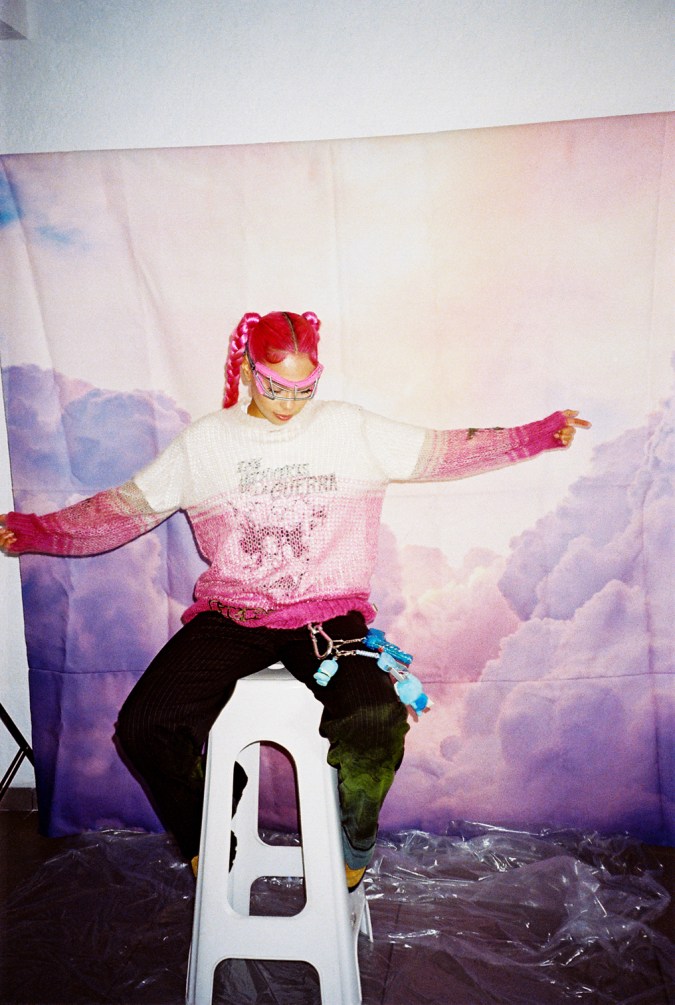

Prior to co-founding Tempvs Music with Jace Kimura in 2016, Gynn was most concerned with honing her craft. Hailing from the neighborhood of Tacubaya, she was bombarded by cumbia and reggaeton at her local tianguis (i.e., Chilango street markets), while her mother kept salsa and boleros in rotation at home. She reminisces on her complicated teenage years, highlighting the absence of a father who migrated north to provide for his family while her mother struggled to make ends meet in Mexico City. She eventually became obsessed with hip-hop culture and found refuge in songwriting, which revealed an exciting new path.
“That was back when you could put 10 songs on your cell phone before it ran out of space,” she says with a chuckle. “All we had were our friends and the street. We used to go out, buy CDs at the market near the bus terminal, and hit up perreos in Tacubaya and Escandón. It was the hardest time of my life, economically speaking, but it was also a very fun, formative time.”
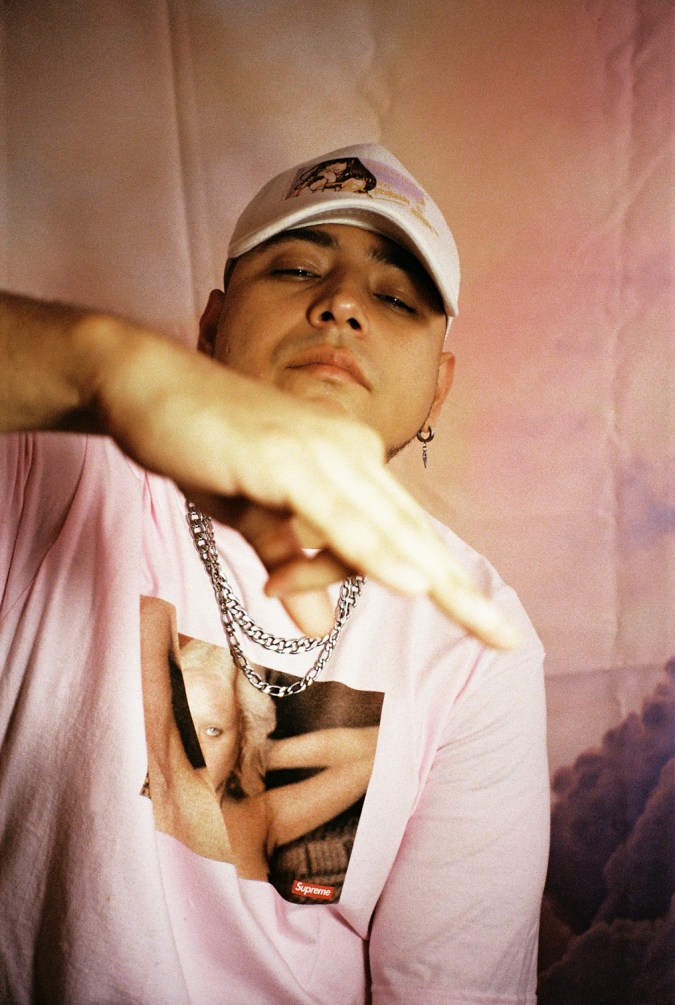

“We all wanted to be singers, not producers,” adds Kimura, a lawyer by trade who’s been in the music game for over a decade. Tempvs’ defacto patriarch began rapping in high school before finding his groove as a producer when free downloadable beats didn’t cut it anymore. Back in 2014, he and Gynn ran in rap and trap circles and even launched a small label that lasted just over a year. “Thing is, we wanted our music to play in dance spaces,” he adds, which triggered the shift towards reggaeton, though lyrics stayed just as sharp. The pair eventually quit their day jobs, betting on a dream, and even launching the streetwear brand Gold Griba to offset the cost.
One of Tempvs Music’s first successes came with 2017’s “Partyseo,” which launched #Mexasinpartys—the romantiqueo trio comprised of Mikeanyway, Baby Bae, and Niño Dior—and marked Gynn’s first foray into reggaeton. While all three of the #Mexasinpartys have explored solo ventures, Mikeanyway also stepped up as the label’s graphic designer, launching his own brand, KARTEL, shortly after. “Tapping someone external for all the cover art was really expensive, so Jace [Kimura] encouraged me to take on the team’s designs,” he says.
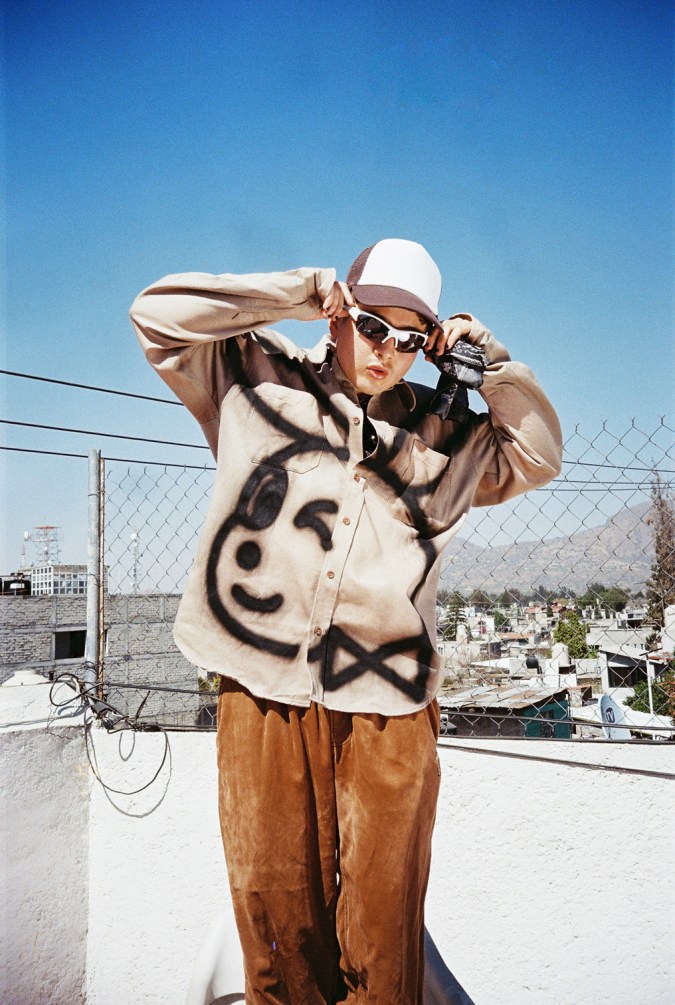

“We’re all clinging to a dream. That’s what keeps us going,” reflects Danny Damn, who joined Tempvs Music in 2016 and has grown into the label’s other core producer and go-to live DJ. He highlights how opportunities evolved once they started booking shows and parties in central neighborhoods like Roma, Condesa, and Centro, where Perreo Millennial‘s bacchanals and nightclubs like Rico became epicenters of Mexico City’s reggaeton resurgence. “NAAFI were throwing lots of parties back then, and we also met the folks from Malianteo. A space like Club Terminal, which showcased some pretty wild sounds, allowed us to experiment and play with crazy ideas. These days lots of clubs act as if they’re inclusive because they play hip-hop, reggaeton, and a little cumbia, but give me a break! Terminal was playing techno on the same night as guaracha.”
With discussion of the city’s evolving nightlife landscape, conversation on the past, present, and future of Mexican reggaeton inevitably comes up. First, they note the cultural and rhythmic distinctions within the scene; reggaeton made in Veracruz—where La Dinastía, Big Metra, and El Habano emerged as luminaries—embraced more of the genre’s Caribbean roots. Meanwhile, reggaeton Chilango spearheaded by DJs like Pablito Mix, Mad Fuentes, and DJ Tona ushered the raw production style and unmistakable cumbia percussion still heard from younger stars such as Uzielito Mix and Bellakath. The Tempvs team has also embraced cumbiatón’s sonidero whimsy, notably on #Mexasinpartys’s “El Bajo” and Gynn’s “Las Chicas Super Perreadoras.”
“Mexico is still developing its reggaeton identity… [We’re] still developing something that’s ours and not a copy.”
“I think Mexico is still developing its reggaeton identity,” says Kimura. “For a long time, people were Boricua-fying their slang.” “Not just that,” adds Damn, “the intonations, dragging words, mumbling… [Mexico is] still developing something that’s ours and not a copy. That’s why someone like Alemán has blown up. He found his own thing in trap instead of holding on to someone else’s. You gotta bring your own point of view, and it has to sound like your context so it connects with people.”

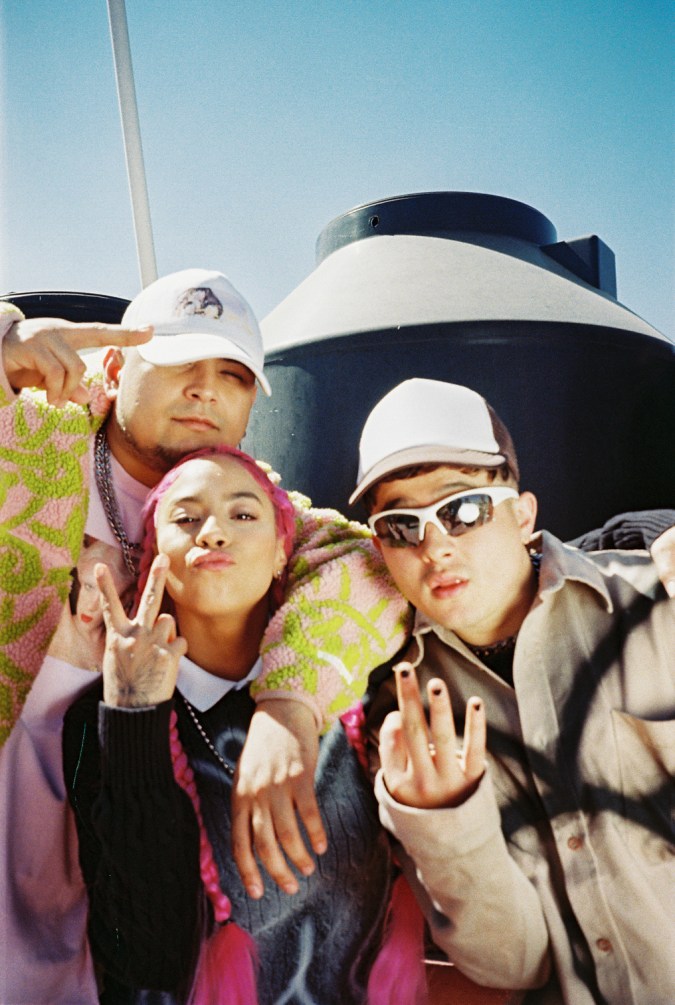
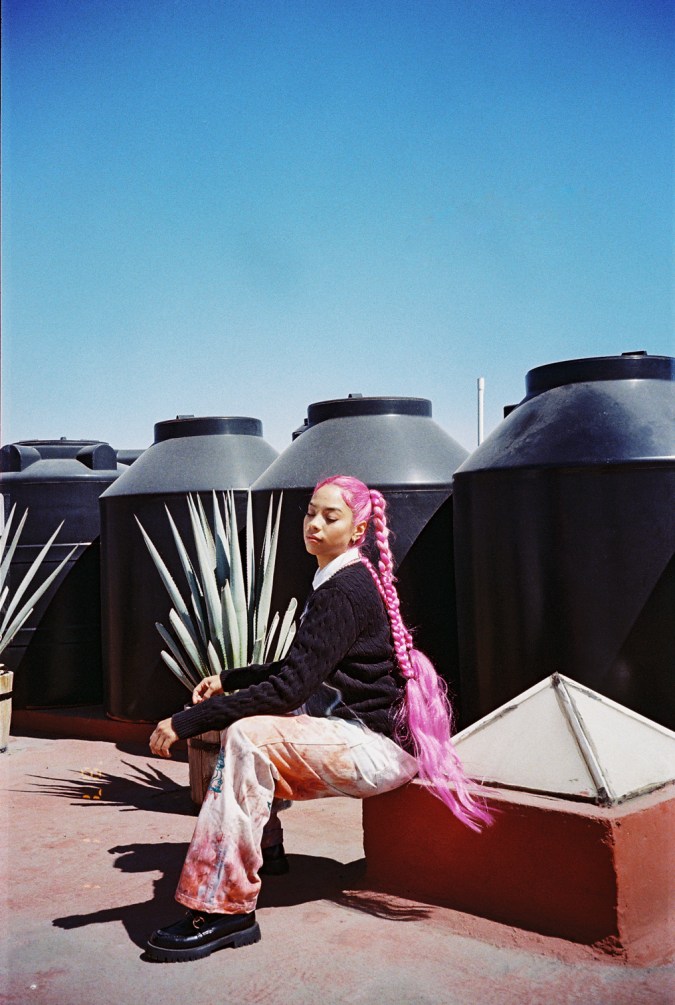
In recent years, Flow Fest has become the preeminent stage where all different reggaeton perspectives converge in blockbuster fashion. This latest edition was led by genre OGs like Don Omar and Jowell & Randy, while Gynn and Bellakath represented the home team. Isabella Lovestory held it down for Neoperreo, while Kaidy Cain, Bad Gyal, and Polimá Westcoast showcased new reggaeton trends coming out of Spain and Chile. And even sets by Young Miko and El Alfa updated audiences on the here and now of trap and dembow.

The future is bright for both Tempvs Music and Mexican reggaeton at large. Charly Gynn has kicked off 2023 with a brand new banger aptly titled “Soy Un 10,” accompanied by a think-pink music video that would be the envy of any aspiring Bratz doll. Although coy, Gynn also previews upcoming collaborations with Boricua reggaeton legend DJ Blass, as well as top Mexican producers like DJ Bryan Kingz, DJ Tona, and DJ Aza. Also on the horizon is an intriguing crossover with Monterrey’s Foudeqoush, who made a splash after appearing in Wakanda Forever’s dazzling soundtrack.
“I think Mexican audiences need to reflect on their listening habits,” cautions Damn as our conversation winds down. “Our country is one of the biggest consumers of reggaeton in the world, yet homegrown artists receive the least amount of local support. It’s important to stop deifying the outside and to begin appreciating what’s flourishing right here. Where there’s pain, there’s talent.”
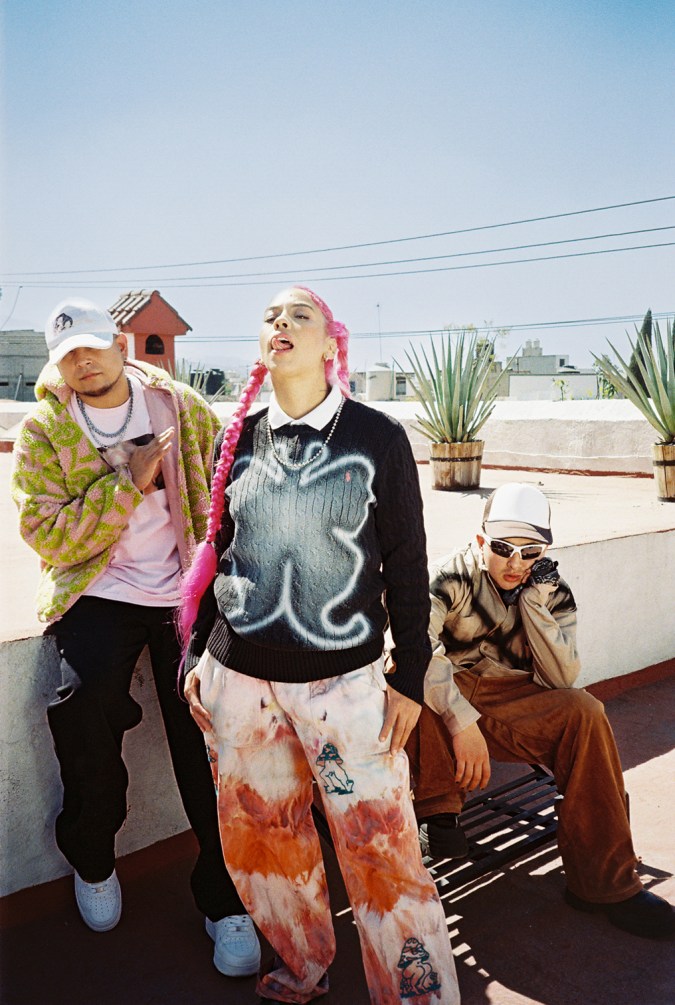
Photo & Styling by Zai Nájera
Special thanks to 3er Mundo & Josué Nájera




